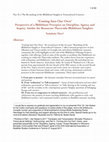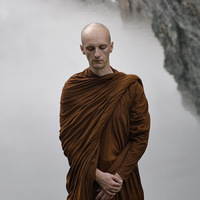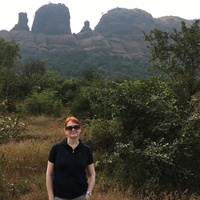Papers by Tathālokā Bhikkhunī

“Coming Into Our Own,” the second part of the two-part “Remaking of the Bhikkhunī Saṅgha in Tran... more “Coming Into Our Own,” the second part of the two-part “Remaking of the Bhikkhunī Saṅgha in Transcultural Contexts,” offers internal perspective on how Dhamma and Vinaya studies are brought into and inform bhikkhunīs’ monastic community life (with highlights on the role of the Bhikkhunī Vibhaṅga Project), together with offering a look at some of the puzzles or problems that bhikkhunīs are working on within the Theravāda tradition. The author draws from her experience with ordinations and bhikkhunīs’ individual and community life including but not limited to North America, Australasia, India, Sri Lanka & Thailand over a 30 year period, from approximately the last decade of the 20th century to the second decade of the 21st. Topics of active interest and work center on a dynamic and creative tension or fusion between ideals and vision, with striving, attainments and lived practices in the renascent bhikkhunīs’ community. These topics include:
I. From past to present—the dynamic interplay between envisioned past (or pasts) and present;
II. From “ordination” to “full acceptance”—forms of dual ordination and one-sided ordination; upasampadā as “full acceptance” or “fully sharing in the training and way of life” and the actuality in the contemporary greater Saṅgha; questions of belonging, lineage and saṃvāsa;
III. From text to congruence in cultural context/s—the gārudhammas and sikkhamānā; the position of senior teaching bhikkhunīs with regards to ovāda, and bhikkhunī teachers’ and community leaders’ position in Buddhist monastic teaching and leadership structures; support, living with Vinaya, and religious alms mendicancy in the contemporary West;
IV. From renascence to renaissance—bhikkhunīs’ discipline and developing bhikkhunī saṅgha/s as optimal container or the most optimal conditions for supporting and effecting the Buddhist intention and aim of women’s liberation, ceto-vimutti.
Commemorative Essay Offered on the Occasion of the 2600th Anniversary of the Bhikkhunī Sangha & 3... more Commemorative Essay Offered on the Occasion of the 2600th Anniversary of the Bhikkhunī Sangha & 30th Anniversary of the First Contemporary Theravāda Sāmaṇerī
Pabbajjās

Available records, when gathered together, could be seen as suggesting that in the past there hav... more Available records, when gathered together, could be seen as suggesting that in the past there have been both bhikkhunis and samaneris in the lands now known as Thailand, from the time of the Aśokan missions of arahants Sona and Uttara to Suvannabhumi, up until the Ayutthaya Period, and even into the twentieth century in the northern regions. However, there is little or no public knowledge nor a sense of connectedness to this distant and more recent past within contemporary Theravada Buddhist communities. The updated version of this paper, originally published as an appendix to the 2007 First International Congress on Buddhist Women paper "Mining for Gold" and now republished indepedently in the July 2015 issue of Gautami Samayiki, gathers such records. It aims to share knowledge and foster a sense of connectedness with our shared past as well as to contribute to further reflection and consideration, potentially leading to a shift in perspective with regards Buddhist monastic women's history, the history of the monastic Sangha and the history of Buddha Catu Parisa (Buddha's Fourfold Community) in Southeast Asia, particularly in the region/s now known as Thailand.
Legends of Paritta: Protective Chants and Background Stories (English tanslation of the Thai: Tamnan Phra Paritta), 2011

Green Monasticism: A Buddhist-Catholic Response to an Environmental Calamity, May 2008
For more than forty years—inspired by the pioneering dialogues of the Trappist monk Thomas Merton... more For more than forty years—inspired by the pioneering dialogues of the Trappist monk Thomas Merton, with His Holiness the Dalai Lama, and the Zen master Daisetz T. Suzuki—Buddhist and Christian monastics have been engaged in interfaith colloquies about the similarities and differences between these two great spiritual traditions. In 1996 and 2002, practitioners from Catholicism and various Buddhist traditions met at Gethsemani Abbey in Kentucky, the home of Thomas Merton, to discuss spiritual practice and the nature of suffering, respectively.
Green Monasticism is a collection of articles and talks from the third Gethesemani Encounter, which took place in 2008. The theme was the Buddhist and Catholic response to the environmental crisis. In addition to covering a wide range of Catholic thought, the essays come from both the Theravadan and Mahayana traditions and cover both North American and international monastic orders.
In "Saffron & Green in the Clear Forest Pool: The Environmental Practices of American Buddhist Monastic Communities", Ven Tathaloka Bhikkhuni shares what she termed "A Reflection on the Four Noble Truths & Right Effort for Revealing, Clarifying and Righting Bad Practices of the Buddhist Monastic Communities in North America that are Hidden or Justified by Ideology".
Present, Sep 7, 2011
As so many ancient tales, the disciple Uppalavaṇṇā's is one of many twists and turns, spanning va... more As so many ancient tales, the disciple Uppalavaṇṇā's is one of many twists and turns, spanning vast reaches of time and space, past, present and future -the web of incarnations, human, animal and divine -in connection with the Buddha. It has been a popular tale, told in multiple texts, fascinating generations of story-weavers and listeners for more than twenty-five centuries. For good reason, as it continues to serve as a catalyst for exploration, inspiration and insight.
Present, Nov 25, 2012
This article looks at the language and words used to
express the decisive mental and emotional ... more This article looks at the language and words used to
express the decisive mental and emotional states of the
awakened women disciples of the Buddha whose past life
stories are remembered and recorded in the Therī Apadāna of
the Pali Canon’s Khuddhaka Nikāya—words which singularly
and in sum might be seen as the Pali-text Tipitaka’s equivalent
to the arising, developing, maturating, and fulfilling of
bodhicitta. Words expressing the inspiration which led to
these women’s successful aspirations to awakening, the
mental and emotional states supporting their aspiration and
resolve, and the character of their intention itself are looked
at in context with an eye to what we can learn from them









Uploads
Papers by Tathālokā Bhikkhunī
I. From past to present—the dynamic interplay between envisioned past (or pasts) and present;
II. From “ordination” to “full acceptance”—forms of dual ordination and one-sided ordination; upasampadā as “full acceptance” or “fully sharing in the training and way of life” and the actuality in the contemporary greater Saṅgha; questions of belonging, lineage and saṃvāsa;
III. From text to congruence in cultural context/s—the gārudhammas and sikkhamānā; the position of senior teaching bhikkhunīs with regards to ovāda, and bhikkhunī teachers’ and community leaders’ position in Buddhist monastic teaching and leadership structures; support, living with Vinaya, and religious alms mendicancy in the contemporary West;
IV. From renascence to renaissance—bhikkhunīs’ discipline and developing bhikkhunī saṅgha/s as optimal container or the most optimal conditions for supporting and effecting the Buddhist intention and aim of women’s liberation, ceto-vimutti.
Pabbajjās
Green Monasticism is a collection of articles and talks from the third Gethesemani Encounter, which took place in 2008. The theme was the Buddhist and Catholic response to the environmental crisis. In addition to covering a wide range of Catholic thought, the essays come from both the Theravadan and Mahayana traditions and cover both North American and international monastic orders.
In "Saffron & Green in the Clear Forest Pool: The Environmental Practices of American Buddhist Monastic Communities", Ven Tathaloka Bhikkhuni shares what she termed "A Reflection on the Four Noble Truths & Right Effort for Revealing, Clarifying and Righting Bad Practices of the Buddhist Monastic Communities in North America that are Hidden or Justified by Ideology".
express the decisive mental and emotional states of the
awakened women disciples of the Buddha whose past life
stories are remembered and recorded in the Therī Apadāna of
the Pali Canon’s Khuddhaka Nikāya—words which singularly
and in sum might be seen as the Pali-text Tipitaka’s equivalent
to the arising, developing, maturating, and fulfilling of
bodhicitta. Words expressing the inspiration which led to
these women’s successful aspirations to awakening, the
mental and emotional states supporting their aspiration and
resolve, and the character of their intention itself are looked
at in context with an eye to what we can learn from them
I. From past to present—the dynamic interplay between envisioned past (or pasts) and present;
II. From “ordination” to “full acceptance”—forms of dual ordination and one-sided ordination; upasampadā as “full acceptance” or “fully sharing in the training and way of life” and the actuality in the contemporary greater Saṅgha; questions of belonging, lineage and saṃvāsa;
III. From text to congruence in cultural context/s—the gārudhammas and sikkhamānā; the position of senior teaching bhikkhunīs with regards to ovāda, and bhikkhunī teachers’ and community leaders’ position in Buddhist monastic teaching and leadership structures; support, living with Vinaya, and religious alms mendicancy in the contemporary West;
IV. From renascence to renaissance—bhikkhunīs’ discipline and developing bhikkhunī saṅgha/s as optimal container or the most optimal conditions for supporting and effecting the Buddhist intention and aim of women’s liberation, ceto-vimutti.
Pabbajjās
Green Monasticism is a collection of articles and talks from the third Gethesemani Encounter, which took place in 2008. The theme was the Buddhist and Catholic response to the environmental crisis. In addition to covering a wide range of Catholic thought, the essays come from both the Theravadan and Mahayana traditions and cover both North American and international monastic orders.
In "Saffron & Green in the Clear Forest Pool: The Environmental Practices of American Buddhist Monastic Communities", Ven Tathaloka Bhikkhuni shares what she termed "A Reflection on the Four Noble Truths & Right Effort for Revealing, Clarifying and Righting Bad Practices of the Buddhist Monastic Communities in North America that are Hidden or Justified by Ideology".
express the decisive mental and emotional states of the
awakened women disciples of the Buddha whose past life
stories are remembered and recorded in the Therī Apadāna of
the Pali Canon’s Khuddhaka Nikāya—words which singularly
and in sum might be seen as the Pali-text Tipitaka’s equivalent
to the arising, developing, maturating, and fulfilling of
bodhicitta. Words expressing the inspiration which led to
these women’s successful aspirations to awakening, the
mental and emotional states supporting their aspiration and
resolve, and the character of their intention itself are looked
at in context with an eye to what we can learn from them